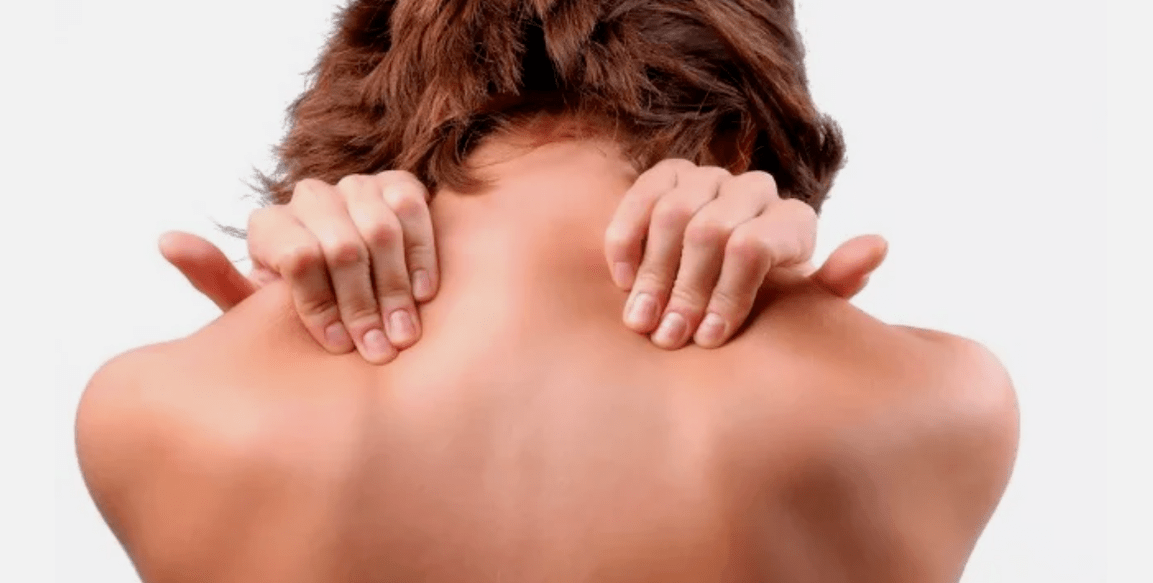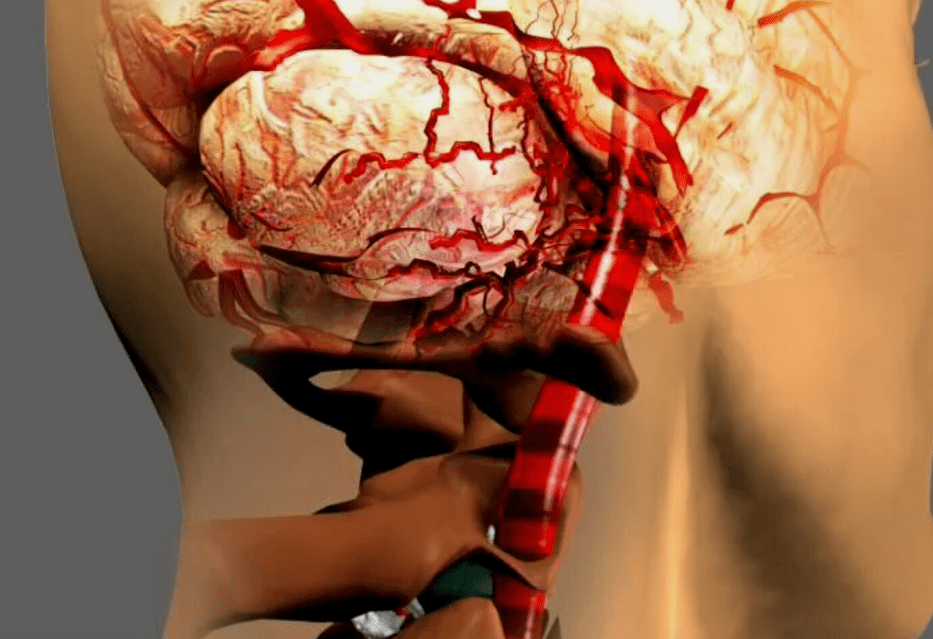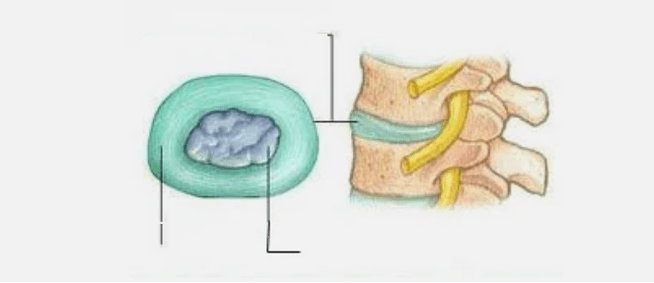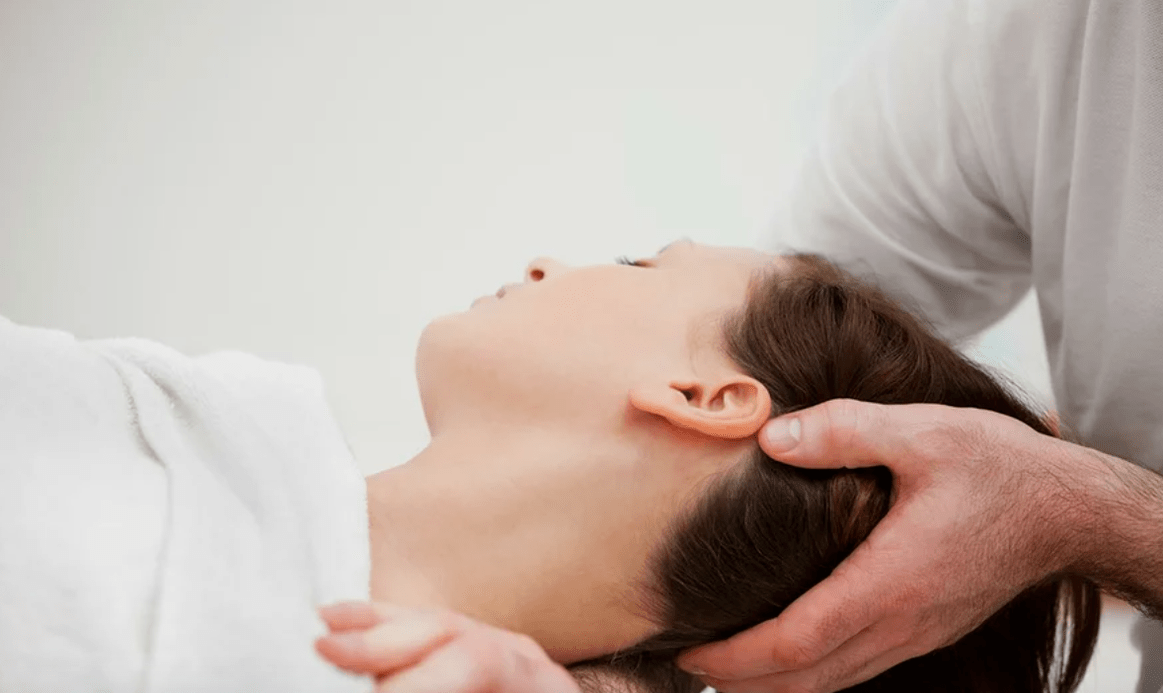
Cervical osteochondosis is a disease in which the pulp between the vertebrae, acting as a shock absorber, becomes an ossified tissue.
Pain in the neck?Dizziness?Bite?Cervical plans?"Is osteochondrosis really ..."-Do you think, winning a request on the Internet.Without panic!Osteochondrosis of the cervical column is not a sentence, it can be prevented, slowed down and even hardened.How?Let's unfold it.
Introduction
Unfortunately, cervical osteochondosis is a calm and insidious disease.You may not suspect its existence, until you felt the muscle spasm and pain in the neck at some point.Often, dizziness and numbness of the members are added.
The reason for these apparently independent phenomena in the complex nature of osteochondrosis.
What is osteochondrosis: general ...
Osteochondrosis is a spine disease in which intervertebral discs are damaged, playing the role of shock absorbers.Taking and detangling, they give the elasticity and elasticity of the spine, while allowing the body to maintain a balance in the process of movement.With their partial or complete destruction, this balance is lost, which inevitably affects a person's motor activity.The cause of these changes is often physical wear and deformation of the disc or, more simply, its "aging".At the same time, the rest of our body can serve us faithfully for many years.
It is generally accepted that osteochondrosis is an age disease.However, in recent years, the disease has been significantly "younger": in the risk area, 25 years ago and even younger.The fault of everything is a sedentary lifestyle, malnutrition and uneven physical activity on the body.In addition, statistics show that women are more sick than osteochondrosis.First of all, this is due to anatomical characteristics and the emotional bottom.However, the disease is more difficult in men.
... to private cervical osteochondrosis
Osteochondrosis of the cervical column is the most common.The fact is that it is in the neck that the majority of vessels and nerve endings are concentrated, while the vertebrae themselves are much smaller (about half compared to the lumbar department), and the muscle corset is tangibly lower.
With the strong mobility and the proximity of the spinal cord, the neck of our body needs increased attention.
Why is cervical osteochondosis dangerous?

Unfortunately, the danger of cervical osteochondosis is justified anatomically - the vertebral arteries pass through the cervical region, which saturate important brain centers in the rear parts of the brain.And any dysfunction and violation of the blood supply can be of an irreversible nature, ranging from the pathological curvature of the vertebral column (lordosis of the neck) to the complete loss of motor capacity, stroke and even death.
Fortunately, it is almost impossible not to notice the symptoms of an imminent disaster: coordination problems, a strong deterioration of vision and hearing, frequent stunning and loss of consciousness ...
If, associated with regular cervical pain, you have noticed these signs, immediately consult a doctor!
Diagnosis and symptoms of osteochondrosis of the cervical column
Osteochondrosis is a serious disease, and only a qualified specialist, that is to say that a vertebrologist specializing in problem solving with the spine, the orthopedist or the neurologist can diagnose it.
The most precise ways of diagnosing cervical osteochondosis: X -rays, computed tomography (CT) and magnetic nuclear resonance (MRI), which allow not only the symptoms of cervical osteochondosis, but also other concomitant changes in the body.
When a number of the following symptoms appear, immediately ask for professional advice to the doctor.
- Dull, painful and intense pain in the neck and neck
- cervical, crunchy when you turn your head
- dizziness, "sailing" before my eyes, vanish
- headache
- Nausea, vomiting
- Numbness
- noise in the ears, visual disturbances
- General muscular
The pain for osteochondrosis is often painful, given to the head and is accompanied by a numbness of the arms and legs.This is caused, first of all, by pinching on nerve endings and an increase in intracranial pressure.
Nature of osteochondrosis

Like any disease, osteochondrosis of the spine has several stages of development.
For a better understanding of the processes that occur in the body, we first propose to understand the structure of the disc itself, then to analyze the characteristic changes of each stage of osteochondosis.
The vertebral disc itself consists of several parts: a pulpo-bunken jacket nucleus (inside), a fibrous ring (outer shell) and hyalin cartilage separating the disc from the vertebra and performing the function of the power.
The Pulpian nucleus is rich in water, and it is he who is responsible for depreciation, adapting to the center of gravity, by tightening and moving like a ball of mercury.The fibrous ring that surrounds it, on the contrary, has a solid structure and consists of intertwined fibers.Since the main task of the fibrous ring is to protect the nucleus from damage, it is which takes the "blow" to itself at high loads.
Osteochondrosis steps
Traditionally, four stages of osteochondrosis are distinguished.
1st degree cervical osteochondosis - preclinical stage
It is the early stage of the disease when the "drying" of the SO disc was called: its size and its elasticity are reduced.
At the same time, there are not yet structural changes - however, as well as symptoms and, therefore, complaints.You may not feel discomfort;The only "harbinger" can prove to be a morning stiffness and salt deposits in the neck.Although you see, with our way of life, these sensations are rather the norm.
2nd degree cervical osteochondosis - the start of structural changes
Here, irreversible changes begin in the Pulpian nucleus - necrosis and destruction caused by a violation of metabolic processes - simultaneously with the formation of cracks in a fibrous ring.
The body begins to send SOS signals in the form of acute pain in the neck, a decrease in endurance and rapid fatigue.
3rd degree cervical osteochondrosis - Progressive discos
The tightness of the fibrous ring is disturbed, following which the nucleus of the pulpose "protrudes" in the vertebral canal through the cracks was formed.
If a complete break in the outer shell does not occur, the intervertebral disc can always be restored.This process is called the projection of the spine and is successfully treated on an outpatient.At the same time, you feel constant pain in the neck and the whole back, progressing during loads and stay in an uncomfortable position.
In the case of the complete destruction of the fibrous ring, coordination problems, dizziness and nausea are added to pain;There is a risk of disability.It is necessary to quickly ask for medical help!
4th degree cervical osteochondosis - Regeneration
Due to irreversible processes between the vertebrae, growth (osteophytes) are formed to block the mobility of the joints.The pulpose nucleus is replaced by a scar tissue, the nerve endings are injured, a remedy is only surgically.
Paradoxically, in terms of well, you may feel notable improvements - the spine again acquires the ability to take loads.However, limited pain and motor activity will not intensify later.
The causes of osteochondrosis

Alas, speaking of the causes of a disease as difficult as osteochondrosis, you should keep in mind many factors: conditions external to physiological predisposition.
How to understand that you are at risk?Mentally put a check mark in front of each of the points adapted to you and your lifestyle.
- Have you had injuries to the spine?
- Is there an excess weight (degree of obesity)?
- Explored by bad habits (smoking, alcohol consumption), regular stress?
- Do you suffer from chronic infectious diseases, metabolic disorders?
- Is your work linked to hard physical work?
- Have you received a diagnosis of posture and / or flat feet?
- Do you live regular loads on the spine?
If at least one of the questions you answered in the affirmative, alas, you are in danger.This is bad news.But there is also a good one: osteochondrosis of the cervical column can be stopped, dried and even prevented with a timely diagnosis and the start of the appropriate prevention.
How to prevent osteochondrosis
There are a number of preventive measures that we recommend that you observe the game "in advance on the head" with osteochondrosis of the cervical column.
STEP 1. get up!
Do you head a sedentary lifestyle?Sedentary work, several hours of stay on the computer, irregular and malnutrition, lack of sleep, stress ... is familiar?
All this contributes to "stagnant" processes in the body and causes the initial stage of osteochondrosis.
To avoid the progression of the disease, approach the daily routine reasonably, take regular breaks (every hour for five minutes) and take more care of your health.Believe me, very soon you would say "thank you" yourself!
Take a rule: put reminders (or in particularly "neglected" cases - an alarm clock) so as not to miss the moment of work excitement ... when you just need to get up and leave.
STEP 2. Take care of your own convenience!
For convenience, we mean the physical signals that the body gives.Listen and take care of yourself!
First, avoid excessive and unreasonable loads.If you are a regular at the gymnasium, the weight dose, do not miss the warm and follow the regularity of the training.
Second, abandon uncomfortable shoes.We are not ruthlessly asking to get rid of your favorite shoes or output boots - let them stay for special occasions.It is important that these "special cases" do not become your life standard in 24/7 mode."For each day", choose shoes with a comfortable block that does not cause discomfort and does not affect the posture and the process.
Third, do not save on furniture and sleeping accessories.If the office chair does not categorically suit you, accept replacement or take care of your own comfort yourself.Subsequently, this investment in one time can extend serious regular expenses to you.
Use only anatomically correct furniture that reduce the load on the spine.For a house, choose a bed with a hard mattress and a comfortable pillow adapted in density and height.Anatomical or ordinary - you decide, because many depends on the characteristics of your body.
STEP 3. Do not forget prevention!
Warned - Means armed, right?
If you experience periodic fatigue and pain in the neck and back, or, conversely, to avoid them, we recommend a simple set of exercises, particularly effective in the initial (preclinical) stage of osteochondrosis.
Gymnastics for cervical osteochondosis

You can perform gymnastics for osteochondrosis of the cervical column at home and directly at the workplace.
- Sit uniformly, straighten your back, relax your hands and lower it along the body.Turn the head alternately right and left, about 90 degrees (or how much the joints allow).Move gently, avoid sudden movements.
Make 8 repetitions for the first time and, in the future, gradually increase the number of turns to 15 in each direction. - In the same position, tilt the head forward, pressing the chin to the chest and back, taking the back of the head at the back of the neck.Also start with 8 repetitions and increase to 15 times.
- Then go to your shoulders.First, lift the two shoulders (towards the ears), keep a few seconds and the decline.So 8 repetitions.
Then move your shoulders alternately: right, left, to change - 8 repetitions. - Put your palm on your forehead and press a simultaneous tilt of your head forward.A 10 -second break - and therefore 8 times in a row.
After the end of the complex, be sure to massage the neck to relieve the tension.
Attention!If you feel serious discomfort during the exercises, consult a specialist and dose carefully the load!
Cervical osteochondosis: treatment
The treatment of osteochondrosis of the cervical column can be closely targeted or complex, combining several components at a time.
Physiotherapy

Physiotherapy for cervical osteochondosis is a method of local effects directly on inflammation of inflammation.The therapeutic effect is obtained due to improving blood circulation and metabolic processes.The pain in the neck stops, the severity of the symptoms decreases.
There are many physiotherapy options for cervical osteochondosis: electrotherapy, exposure to a magnet, laser, water and mud, electrophoresis, acupuncture, as well as moderate heating of the inflamed area.
Before registering for procedures, studying the contraindications carefully and consulting your doctor.
Massage
With cervical osteochondosis, the massage of the collar area helps well.You can register for the masseur sessions or massage using professional vibration massers.
Medicines and diet
Anti-inflammatory drugs, pain relievers, antispasmodics, antipasmodics, antispasmodics and metabolic processes.The spectrum of drugs includes tablets, creams, ointments and solutions for intramuscular injection.
Remember that only a doctor can skill a medical medication with competence!
A balanced diet will help increase the efficiency of drugs and improve the overall tone of the body.Limit consumption of fatty, spicy and smoke, salt.Prefer vegetables and fruits, meat, fish and properly cooked dairy products.Add nuts and honey to diet.And drink more liquids.
Even if osteochondrosis does not threaten you, a balanced diet will positively affect the general well and the state of the body.You will see, after a few weeks, you will notice incredible changes!Check your own experience!






















